#Akira Toshi
Text
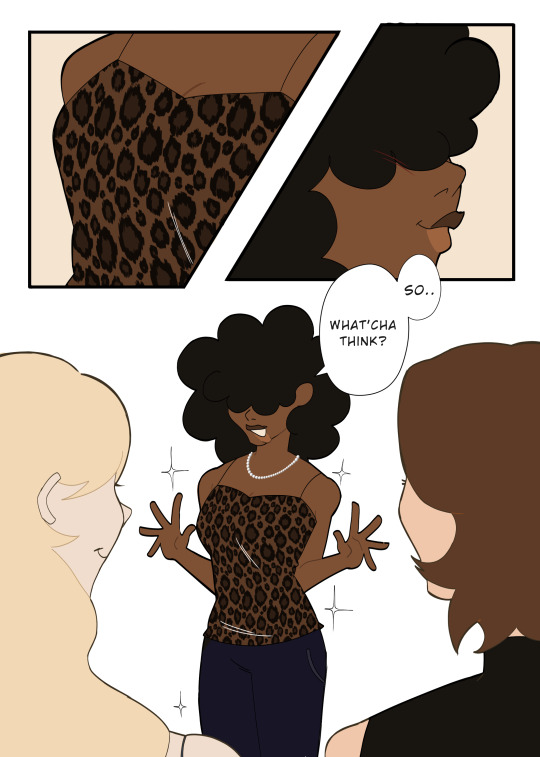
Fit check :d
#Akira stays winning when it comes to fashion#Compared to coach atleast#supa strikas#supablr#oc#original character#Akira Toshi#comic#supa strikas oc#my art 💌
21 notes
·
View notes
Text
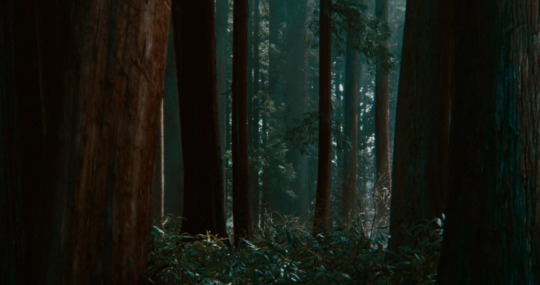
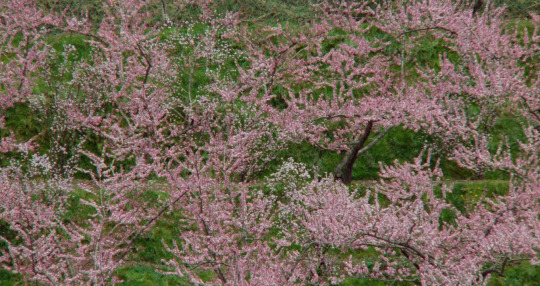
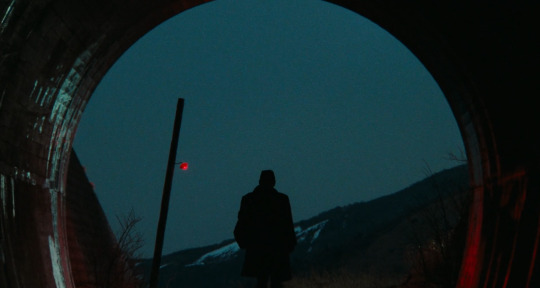




夢, (1990) Dir. Akira Kurosawa
#dreams#夢#akira kurosawa#akira terao#mitsuko baisho#toshie negishi#mieko harada#mitsunori isaki#toshihiko nakano#yoshitaka zushi#hisashi igawa#chosuke ikariya#movie stills#movieedit#filmedit#cinema#screencaps#cinematography#cinephile#film photography#movie#cinemetography#mine#films
138 notes
·
View notes
Text
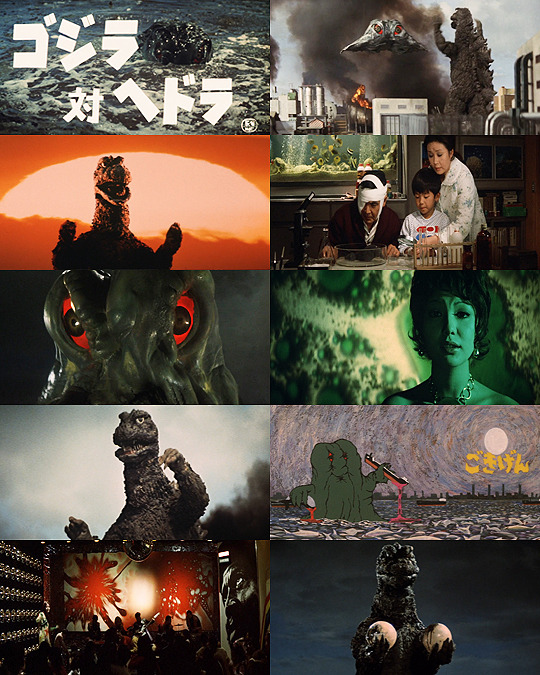
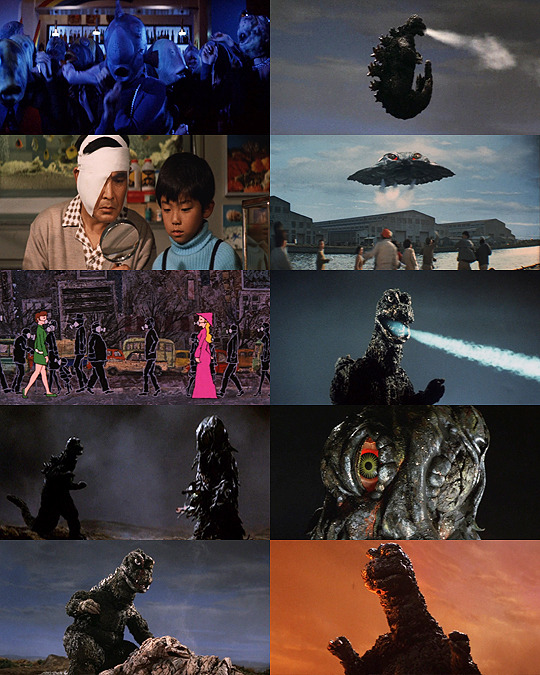
Films Watched in 2024:
27. ゴジラ対ヘドラ/Gojira tai Hedora/Godzilla vs. Hedorah (1971) - Dir. Yoshimitsu Banno
#ゴジラ対ヘドラ#Gojira tai Hedora#Godzilla vs. Hedorah#Yoshimitsu Banno#Akira Yamanouchi#Toshie Kimura#Hiroyuki Kawase#Keiko Mari#Toshio Shiba#Yukihiko Gondô#Haruo Nakajima#Kenpachirō Satsuma#Godzilla#Hedorah#Godzilla vs. The Smog Monster#Films Watched in 2024#My Edits#My Post
13 notes
·
View notes
Text
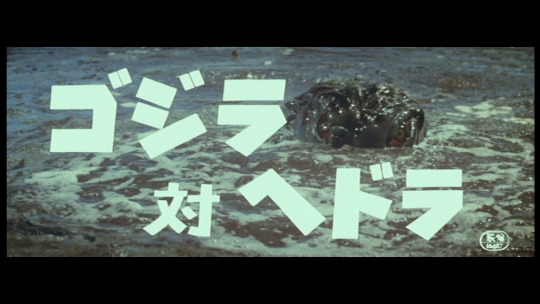

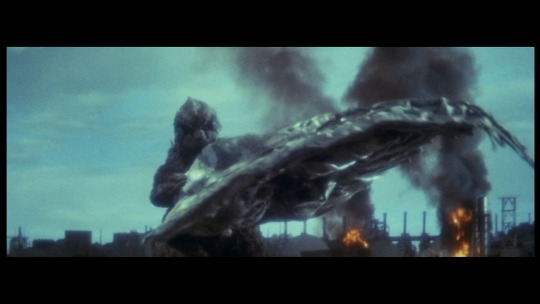

youtube
Godzilla vs. Hedorah (1971)
My rating: 4/10
I suppose it's only appropriate for a movie about a pollution monster to be a huge, weird mess. Theme song's a bit of a bop, though.
#Gojira tai Hedora#Yoshimitsu Banno#Ishirô Honda#Takeshi Kimura#Akira Yamanouchi#Toshie Kimura#Hiroyuki Kawase#Youtube
2 notes
·
View notes
Text


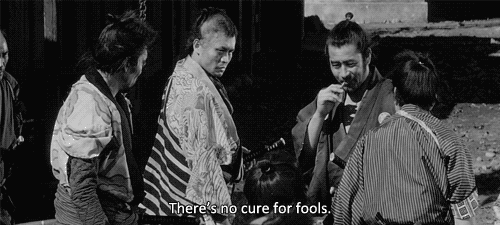
Yojimbo (1961) Dir. Akira Kurosawa
#japanese film#akira kurosawa#toshi#toshiro mifune#usagi yojimbo#samurai#japanese cinema#japanese movie#film aesthetic#60s film#60s cinema#cinema#cinestill#film stills#film#movies#movie art
9 notes
·
View notes
Video
The Alchemist Code (JP) x Gintama: Katsura Kotarou Voice Collection
#mine#video#gintama#katsura kotarou#ishida akira#tagatame#mostly saved for archiving purposes! but anyone is free to translate if they ever want to#okt's next. then toshi will be the final one#but that'll be later/the next day since i don't want to spam the tags ahaha
9 notes
·
View notes
Photo

Rhapsody in August
directed by Akira Kurosawa, 1991
#Rhapsody in August#Akira Kurosawa#movie mosaics#Hisashi Igawa#Narumi Kayashima#Sachiko Murase#Tomoko Otakara#Mitsunori Isaki#Toshie Negishi#Hidetaka Yoshioka#Choichiro Kawarazaki#Mieko Suzuki#Richard Gere
1 note
·
View note
Text
MASTERLIST DE NOMES JAPONESES (FEMININOS, MASCULINOS E NEUTROS)
olá pessoal, tudo bem? escrevi essa masterlist pra quem, como eu, curte fazer uns personagens japoneses em seus 1x1 e em comunidades e sempre tem que ficar procurando uns nomes no google. aqui tem alguns dos meus nomes femininos, masculinos e neutros preferidos que coletei pela internet afora. espero que gostem!
obs: alguns nomes da lista dos nomes femininos e masculinos também podem ser considerados neutros, assim como alguns neutros são ditos como masculinos/femininos em alguns sites, então não levem tão ao pé da letra!

nomes femininos:
Akari
Asami
Asuna
Azumi
Cho
Hana
Harumi
Hina
Hinata
Hiromi/Hitomi
Izumi
Kanako
Katana
Kaori
Keiko
Kyoko
Kimi
Mai
Masako
Masami
Mayumi
Mei
Mika/Miki/Miku
Misa
Miyah
Mizuki
Nagi
Nana
Nanako
Nara/Nari
Nishi
Rei
Risa
Sakura
Saori
Sayuri
Seika
Shion
Suki
Takara
Taki
Tami
Toshi
Usagi
Yoko
masculinos:
Akihiko
Akito
Asahi
Asuka
Daichi
Hachi
Hachiro
Haku
Haruto
Hideki
Hiro
Hiroto
Hiroshi
Hoshi
Ichiro
Itsuki
Jun
Kaito
Katashi
Katsu/Katsuo
Kazuki
Ken
Kenji
Kentaro
Kenzo
Koya
Kyo
Makoto
Matsu
Minato
Miho
Natsuo
Nori
Ren
Ryo/Ryu
Ryota
Shin
Shiori
Shohei
Shota/Sota
Shun
Tadaki
Tadashi
Taichi
Taiki
Takashi
Takato
Takumi
Tarou
Yamato
Yuta/Yuto
Yukio
neutros:
Aoki
Akira
Asuka
Haru
Haruki
Hikari/Hikaru
Kei
Kiyoshi
Kuma
Maki
Masaki
Midori
Natsu
Niko
Rin
Sora
Taru
Tokyo
Yoshi
Yuki
Yuri
#haru ! masterlists#masterlist#japanese names#name masterlist#masterlist nomes#nomes japoneses#helper rpbr#helper krpbr#masterlist rpbr#masterlist krpbr#resources ! masterlist#haru ! meus
43 notes
·
View notes
Text
Daici
Name: Daici Roads
Age: 4mil
Species: kitsune
Gender: male
Power: grants safety on roads
God: roads
Rank: God of roads
Children: Yoshio, Satoshi, demigod of roads
Neieces: Ayaka, Takara, Jun
Nephews: Akira, Minori, Toshi
Grandchildren: demigods of roads
Partners: Miwa
Siblings: Eiju, Naoko, Yuki
Lives: on the roads, constantly traveling
Parents: Masa, Tadao
(Tag for Daici is Fox Road)
4 notes
·
View notes
Text
The Hijikata family in the Ishida village census
I continue to read the book The demon lieutenant of Shinsengumi. This is in fact a collection of articles by different authors, each with their own way of retelling some moments from Hijikata's life. And one of the authors - my favorite Kikuchi Akira - really dug up something new!
Kikuchi Akira is a Bakumatsu researcher who is always getting into the thick of things: comparing the Okita's kaimyo (posthumous Buddhist name) and the kaimyo of his supposed girlfriend, or parsing Hijikata's letters. And now he has found the census books of Ishida village from 1817 to 1869, which refute the official opinion that Toshizo was fired from one job at 11 and another at 17. According to the new records, he was listed "in the people section" at a completely different age and for quite a long time! In addition, these records reveal some peculiarities of the Japanese population of the century before the last century.
These are the family registration books:

There are 20 volumes of them, and they were kept until recently by a certain Hijikata Satoshi, who only deigned to share them with the public about five years ago (how many more of these things are still stashed away in private archives!).
So, in Japan, throughout the Edo period, monks conducted a census of the population. They sent the data to the shogunate and kept a copy for themselves. The original purpose of this census was to prevent the spread of Christianity, so special books listed all members of each family, along with their servants, their ages, and their religion.
It is difficult to say how often this information was collected, because in Ishida village the census was conducted either once every five years, or every year. But it was always in March.
Hijikata Toshizo was born in May 1835, and the first record of him in the registration book did not appear until March 1840:
parishioner of the Kongoji Shrine of Takahata Village - Toshizo, age 6 [4.5 years old according to our age system]
His name was then written as 歳蔵 throughout the census.
The author provides only one entry entirely about the Hijikata family, in 1848. This is roughly what it looked like:
Income 20 koku, 1 to 1 sho 4 go 7 yu
一 Shingon Sect, Takahata Village, Kongoji Temple
Parishioner - Hayato, 28 years old
Parishioner of the same temple - Wife Naka, 23 years old.
Parishioner of the same temple - Elder brother Tamejiro, 33 years old.
Parishioner of the same temple - Daughter Nui, 7 years old.
Parishioner of the same temple - Son Sakusuke, 4 years old.
Parishioner of the same temple - Servant Hachigoro, 19 years old
一 Zen sect, Yaho village, Nanyoji temple
Parishioner - Maid Hatsu, 21 years old
一 Shingon sect, Shitada village, Anyoji temple
Parishioner - Maid Fude, 12 years old
A total of 8 people, of which 4 are male, 4 are female.
Two more males are in service in other houses:
一 Shingon sect, Takahata village, Kongoji temple
Parishioner - Younger brother Daisaku, 20 years old
Parishioner of the same temple - Younger brother Toshizo, 14 years old
By our age system, everyone here is a year younger. Daisaku was probably about to be adopted by the Kasuya doctor family at that time. As for where Toshi was, it's unknown. Though maybe at his sister's...
The official biography says that in 1845 he was employed in the fabric store Matsuzakaya in Ueno, where the owner was a certain Ito. There Toshi quarreled with the clerk and fled home. And this article even says where this information comes from: it turns out that in 1935, the grandson of Sato Hikogoro and Hijikata Nobu talked about it on the radio.
This same Matsuzakaya still exists today. Here's its website. It's even in English.
The census book for 1845 also exists, but in it, the page about the Hijikata family was "deliberately defaced by someone," as Kikuchi Akira writes. But it's easy to reconstruct the rest from the surviving pieces:
一 Zen sect, Yaho village, Nanyoji temple
Parishioner - Servant Tsunakichi (or Tsunayoshi), 21 years old
一 Shingon Sect, Ochikawa Village, Shinshoji Temple
Parishioner - Maid Kuni, 17 years old
A total of 8 people, of which 5 are male, 3 are female.
Another 1 female is in the service of another house:
一 Shingon Sect, Takahata Village, Kongoji Temple
Parishioner - Younger sister Ran, 15 years old
Ran was Nobu's childhood name. In theory, she married Sato Hikogoro a year ago, and should have been listed in his household by now. But since she's recorded still in it, Kikuchi-san explains, that means her marriage was nominal at first. It was called asiirekon (足入れ婚 ), when one sort of got married, but the wife continued to live in her parent's house. Or maybe "in the service" meant she was living with Sato anyway.
On the defaced page there should be four more "males" and two females: Hayato, Tamejiro, Daisaku, Toshizo; wife Naka, daughter Nui. Sakusuke was born in 1845, the same year (i.e. not yet born in March), and there is no one "in the service" besides Ran.
So Kikuchi-san, based on the study of some other "private documents", concluded that Hijikata worked for this very Ito from about 12-13 and up to 16 years old (according to our age system), and the story of "quarrel with the clerk" and "dismissal because of a girl" took place at the same location.
But in Hijikata's family another version was passed down from generation to generation: that Toshizo first worked in Ueno, and then in Tenmacho, also in a fabric store, and that's where the story with the girl happened. Hijikata has a haiku about Tenmacho, so he was definitely there :) It's just unknown exactly when.
That Toshizo returned home at the age of 16 (in 1851) is a confirmed fact. This is written about in Kojima Shikanosuke's book "両雄士伝" - "The Lives of Two Great Warriors" written in 1873. About Kondo and Hijikata, yep. The very fact that this book exists is a big surprise to me - it's strange that no mention of it has ever been found anywhere! You can understand why though: it's written in kanbun, a hellish mixture of Chinese and Japanese. So, this book says that Toshizo returned to his hometown at the age of 17 (i.e. 16) and began practicing martial arts, in which he soon became very successful.
Anyway, he started selling Ishida Sanyaku and going to different dojos.
However, the monastic registration books for 1854 and 1856 still show "two more males are in the service of other houses". It was not until 1858 that the record that Toshi was finally home appeared for the first time.
Income 39 koku, 7 to 8 go
一 Shingon Sect, Takahata Village, Kongoji Temple
Parishioner - Hayato, 38 years old.
… wife Naka, 33
…older brother Tamejiro, 43 years old.
…younger brother Toshizo, 24.
(then there are 6 children, 1 servant and 1 maid)
Total 12 people, 9 male, 3 female.
On March 9, 1859, Hijikata was officially enrolled as a student at the Kondo dojo. There is an entry about it in the "Registration book of the Tennen Rishin-ryu" (天然理心流神文帳 ), and then in the diaries of relatives, friends and neighbors there are many entries such as "Toshizo came with Okita Soji, both stayed at our place for the night" (Hashimoto's diary, 09-03-1860), or "Toshizo and Kondo Isami went to Itsukaichi" (Sato's diary, 09-05-1860).
In August 1860, another official registration book was published called "Bujutsu eimei roku" (武術英名録 ) - something like "Names of Glorious Swordsmen". It included the names of 600 swordsmen from all over the Kanto region, including Hijikata. Only those who had a rank no lower than mokuroku were enrolled there, and Hijikata would not have been able to get mokuroku in such a short time if he had not studied the sword before, writes Kikuchi Akira. So he did study, but where - that's the question. That is, what kind of "service" he was in from 1853-4 to 1857-8 is unknown. Maybe he just lived at Sato's house and walked around, selling medicine, but Sato has no mention of it. So this is "another mystery" for Japanese historians.
14 notes
·
View notes
Note
Who do you ship your moots with 👀
i am so sorry this took me literally forever to answer (>︿<。) thank you for being patient w me, here’s my lovelies n who i think they belong with !! 🤍💗 lmk what y’all think hehehe <333
➜✰ @touyyes i ship u with … !! @emomanswhore
★☆ baki you know who you belong to, so naturally you’re shipped with me 💋👩❤️💋👩🧁🍓💍 there’s no room for arguments n if you thought you was getting shipped with someone else, you were sorely mistaken 😟💢 …. BUT i do occasionally share you with toji, carlos, godot, leon, dabi n getou
➜✰ @ghxstic i ship u with … !! GYUTARO
★☆ nymphie i feel like gyu NEEDS you in his life forever(˶′◡‵˶) !! i bet he literally follows you every step you take, n while he tries acting hard in public and extremely protective of you,,, i jus know hes the biggest clingy baby who starts grumbling when y’all aren’t attached at the hip every second ♡♡♡
➜✰ @hellavile i ship u with … !! EREN
★☆ EVEEERYYONNEEE knows that my gorgeous momo n eren are the cutest tumblr couple ever🧎🏽♀️🤍 actual couple goals, cuz the way y’all are obsessed with each other makes me extremely jealous. #moren !! ♡♡♡ highkey wanna ship u w akira too cuz i feel like y’all would wear matching all black fits n look so good together <333
➜✰ @maydayaisha i ship u with … !! SOUTH TERANO
★☆ honestly aisha you give me BIG poly vibes ( ⸝⸝⸝• •⸝⸝⸝) like i can see you being in a happy, loving, committed relationship w multiple people ! buuttt if you were to be with a single person, i choose SOUTH. he’s so big n mean, but i bet with you he’s so gentle n treats you like his princess anytime anywhere !! 👑 ♡♡♡ hes never afraid to kiss you n sit you in his lap in front of anyone
➜✰ @snake-titan i ship u with …!! JEAN
★☆ nia piiiiaaaaaaaaa 🫂🤍 im thinking you and jean are the most wholesome n cutest couple EVER <333 like anytime i see y’all, if it’s not you hugging his arm,, it’s him behind you curled around your body like a koala bear ! absolutely adorable ( ˶ˆ꒳ˆ˵ )
➜✰ @sailewhoremoon i ship u with …!! ICHIGO
★☆ honestly sosa, i was so tempted to pair you with either renji or urahara (𖦹﹏𖦹ᐡ꒦)— BUT im sticking with my gut n saying you and ichigo would be the sexiest couple 😩 i just know y’all be dressing and styling together, n you’d be that famous fashion influencer couple on tik tok & the gram ♡♡♡ !!
➜✰ @getosbunny i ship u with … !! GETOU
★☆ his name is sitting there in your user ٩ʕ•ﻌ•*ʔو so ofc pretty girl jade can only be with pretty boy sugu ♡♡♡ !! i think suguru absolutely adores you, like you’ll never have to lift a single finger cuz he lives for spoiling his baby <333
➜✰ @satorhime i ship u with … !! GOJO
★☆ lolly n gojo sittin inna tree k-i-s-s-i-n-g !!! (˶‾ ⁻̫ ‾˵) ♡♡ lolly polly i feel like even tho satoru is your bf, you constantly threaten his life cuz he stays playing games with you. like more than once, you’ve told him you’ll stab him in the leg w a fork cuz he’s just getting on your damn nerves the whole day 🚶🏽♀️🔪
➜✰ @noriken i ship u with … !! DRAKEN
★☆ OF COURSE NORI GOES WITH KEN ?!!! YALL DIDNT KNOW ?????? 🤨 ken for sure got an attitude every minute he goes without you being around him. you got him wrapped around your pretty lil fingers for sure— speaking of, ken gets suupperr happy when he pays for your nails n sees you got his initials on each nail (˶ᵔ𖥦ᵔ˶) <333
➜✰ @bluebellhairpin i ship u with … !! ALLMIGHT
★☆ whether it’s allmight or toshi, nemo i think you’d love him no matter what state he’s in and he’s completely infatuated with you ! (๑ ᴖ ᴈ ᴖ) ♡♡♡ you are his biggest weakness in the world, n i just know he keeps polaroids of you in his wallet
#lorelei’s lovelies.🌟(⸝⸝ᴗ͈ ̫ ᴗ͈⸝⸝)♡#I HOPE I WAS ACCURATE N EVERYONE SEES MY VISIONS#btw if you’re my pretty moot n i didn’t tag you#it’s cuz i really don’t know who to ship you with :( im sorry#just know y’all are in my heart and i love you vvv much
33 notes
·
View notes
Text
Let's say in another universe, your ss OC's are now canon (no matter the season they first appear in) , how would the fandom treat them?
I feel like Eden would either get SO much angst art/fics, be that one average character that everyone simps for, or get reduced to the "tired scientist that hates IU and her job" (either that or just be skarra's gf💀)
Also idea from Amy ily and fatma🙏
#LAST ONE WOULD KILL MEE#supablr would never ily#the rest tho...#ehh#i feel like akira and nalani would be forgotten ;;#they would definitely get like one episode of them having to do smth w supa strikas#and then never be mentioned again#ss writers why u gotta do this#I wont shut up abt them tho#supa strikas#supablr#eden harlow#oc#original character#akira toshi#nalani alama
4 notes
·
View notes
Note
Alrighty, a question! Don't exactly even need to know, but I'm curious. Which japanese names are used gender neutral?
I have heard of a few, like Tsubaki, Akira, Minato and so on, but a list would be nice.
On another note, Erika is a japanese name as well as german, right? Like Yuka is both an Inuit and japanese name x3 I do find it funny that complete different ends of the world could have such small things in common.
gender expressions & impressions of jp given names depend on: (1) the precise characters it comprises of, (2) the reading it uses, (3) societal trends and sentiments, and (4) each individual’s personal perception (and experience) of gender and the name. therefore, sooooo many names out there can be considered unisex and/or gender-neutral! there are hundreds of thousands of possible character combinations you can use to create given names, and what’s more to love is that unisex and gender-neutral names are pretty sought-after, especially in the modern day and the foreseeable future. we love our unisex names and we’re very proud of them!
if there’s any specific theme of names you’d like to see, you can send in an ask with your criterias and i’ll compile you a list. besides my gdoc of rare and unusual jp given names i shared in my previous post, i also have this gdoc of generic/basic/average jp given names you can sort through if you’d like.
indeed, erika and yuka are names that can exist in the jp language. maybe this tip will help with remembering and identification? you can make given names out of almost any set of syllables from the japanese syllabary, as long as it’s within reason (e.g. sounds good as a name, seems logical or plausible, 1–5 syllables in one name, etc.).
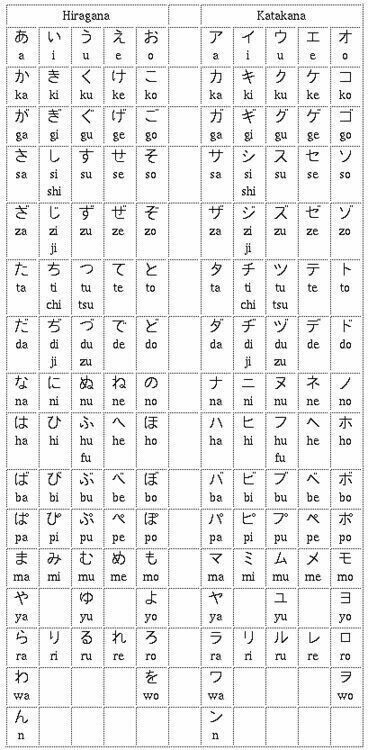
(apologies for the deep-fried quality haha—this is the only kana-to-romaji chart i have ever saved, because i prefer linguistic charts to be as plain-colored, plain-fonted, and plain-formatted as possible.)
for clan/family names however, the rules aren’t as lax because most of them follow kanji and the most standard readings for said kanji. a small % of family names have a mix of kanji + kana in them, which still follow the standard readings of the kanji + of course the unchangeable readings of the kana. only very few (native, non-transcribed) family names out there are entirely written in kana (a real-life example of this is つわぶき峻 Tsuwabuki Toshi, the stage actor who played sakusa in the haikyuu stageplay). oh, and, because we can never have too many exceptions, jp culture also has this very unique occurrence where sometimes, some certain family names get to be as lax as given names in terms of the grapheme-to-phoneme relation, and some people have decided use this opportunity to be very punny wordplayers. these are very few in number, however, and they have history behind them! so i wouldn’t recommend the average writer/artist/fictionist to come up with some on their own. examples of this last one:
一 Ninomae | 一 means “one” | “ninomae” sounds like you’re saying 二の前, “before two”
小鳥遊 Takanashi | 小鳥遊 means “small birds play” | “takanashi” sounds like you’re saying 鷹無し, “there are no hawks/eagles” | ergo, small birds play outside because there’s no hawk preying around.
四月朔日/四月一日/四月朔/四月朔月 Watanuki | 四月朔日/四月一日 means “first of april” | “watanuki” refers to this word 綿抜き, “cotton-stripping; to take out the cotton [padding]” | there’s an old tradition of changing winter-wear cotton-lined warming robes and kimono into lighter summer-wear garments in the 1st day of the 4th lunar month, which is said to prevent children from suffering diseases and potentially dying. i’m a bit confused at what the big deal is with this tradition, because it just seems like common sense to me? seasons change and so do your clothes. that’s normal.
月見里 Yamanashi | 月見里 means “moon-viewing village” | “yamanashi” sounds like you’re saying 山無し, “there are no mountains” | ergo, you can see the moon and do some stargazing if your view isn’t obstructed by mountains. although, i have to point out the fallacy in this logic, as someone who lives surrounded by 3 whole mountain ranges, i know fully well that mountains only obscure a very small % to none at all of your ground view of the night sky. “starless” nights are all the clouds and pollution’s fault! so really, this name should’ve been called Kumonashi (from 雲無し, “cloudless”) instead.
i could’ve sworn i knew more than 4 of these punny family names...
(edit: i found more!)
飛鳥 Asuka | 飛鳥 means “flying bird” | “asuka” refers to the place name 明日香 (“tomorrow fragrance”) | basically, what happened here is that the word 飛鳥 (hichou), coming from the phrase 飛ぶ鳥の (tobu tori no, “flying bird of...”), became a pillow word for the place known as Asuka. both spellings were historically interchangeable.
春日 Haruma, Kasuga, Kasuka | 春日 means “spring sun; spring day” | the word 春日 (shunjitsu/haruhi) was used as a pillow word to introduce the place name Kasuga (which presumably had no kanji writing prior to this?). existing logical readings for 春日 include Haruhi and Haruka.
漢 Hata | 漢 means “han chinese”, the worldwide major ethnic group originating in china | “hata” sounds like you’re saying はた/端, “nearby; besides”
日向 Higa, Higano, Hina, Hinada, Hinata, Hiuga (Fiuga), Hyuga, Hyuuga | 日向 means “in the sun; [facing] towards the sun” | (1) for the Hinata reading; this name is composed of 日 (hi, “sun”) + な (na, old japanese possessive particle, equivalent to modern の) + た (ta, “direction; side”, archaic equivalent of 方). (2) for the Fiuga, Hiuga, and Hyuuga readings; dialectal differences shifted old japanese reading “Pimuka” into “Fimuka” → “Fiuga” → “Hiuga”. southern dialects and languages tend to have this fi- sound that’s nonexistent up in the north. (3) Hiruga may be explained as 「昼日」 (hiru + ka, “daytime sun”) with a rendaku 日 (turning the “-ka” into “-ga”, which is unnecessary, because rendaku doesn’t commonly happen to 日, but everything is full of exceptions today, so... 🤷). existing logical readings of 日向 include Hikou, Himuka, Himukai, Himuki, and Nikkou.
陽向 Hizashi | 陽向 means “in the sun; [facing] towards the sun” | “hizashi” sounds like you’re saying 日差し (may also be written 陽差し、日射し、陽射し、日ざし、陽ざし、日差、or 陽射), “sunlight; sunshine; sun rays”
五十嵐 Igarashi | 五十嵐 means “fifty storms/tempests” | “igarashi” sounds like you’re saying 伊賀嵐, “iga [city] storm” | i believe this may be a reference to the huge storm in 1612 which destroyed the famous iga-ueno castle.
五月雨 Samidare | 五月雨 means “fifth [lunar] month rain”, referring to the heavy rains that occur around early summer | “samidare” sounds like you’re saying 早水垂れ, “early rain fall” | this is a word (for the seasonal occurrence), a place name, and a destroyer name; not family name. i just thought it was cool enough to mention here!
時雨 Shigure | 時雨 means “timely rain; winter rainfall” (originally referred to rainshowers in late autumn to early winter, occasionally late summer and all of autumn too, but today, shigure only refers to a winter rainshower) | “shigure” sounds like you’re saying the classical/literary verb 時雨れる, “to rain a shower” | the history is a bit blurry on this one. 時雨, as a word, was an orthographic borrowing from chinese. it happened a hefty long time ago, and was incorporated into old japanese as the classical verb 時雨る (shiguru), which was later given the modern rendering 時雨れる (shigureru), which then presumably became the clan name Shigure.
日本 Yamatono | 日本 means “base/foundation/origin of the sun” and is the modern name for japan | “yamatono” sounds like you’re saying 大和の, “of the yamato people’s” | 大和 (yamato) was the ancient name for japan before it was changed to 日本 (nihon/nippon), and also the name of an ancient province, the name of the current dynasty (and consequently, the imperial family as well), the name of an old battleship, and is sometimes still used to refer to japanese people in a historic way. it’s worth noting that the reading of “yamato” itself isn’t grammatically logical for the kanji 大和. my best theories as to how 大和 became yamato are: (1) homophone of 山都 (“mountain metropolis”), (2) homophone of 山門 (“mountain gateway”), and (3) homophone of 山人 (“mountain people”); but i haven’t seen any proper, in-depth linguistic study done on this, so i can’t guarantee anything. the kanji 倭 [yamato, shitaga.u | wa, i] was likely based on 大和 after it got its “yamato” reading, so 倭 isn’t an important factor in this discussion (as of right now, at least).
hope this answers your curiosity!
#japanese names#japanese language#japanese linguistics#japanese culture#japanese family names#names#given names#family names#sino family names#sinitic names#sinosphere#onomastics#unisex & gender-neutral#japanese wordplays#japanese puns#gdoc links#skipper answers#rlppl: iced baby
31 notes
·
View notes
Text
The Cinema Film Of The Week - Godzilla vs Hedorah AKA Godzilla vs The Smog Monster
Directed By Yoshimitsu Banno

Story By Yoshimitsu Banno and Takeshi Kimura
Starring Akira Yamauchi, Toshie Kimura, and Hiroyuki Kawase
Music By Riichiro Manabe
Distributed By Toho
Release Date July 24, 1971
Country Japan
5 notes
·
View notes
Text

Mayumi Ogawa and Ken Ogata in Vengeance Is Mine (Shohei Imamura, 1979)
Cast: Ken Ogata, Rentaro Mikuni, Mitsuko Baisho, Mayumi Ogawa, Nijiko Kiyokawa, Chocho Miyako, Taiji Tonoyama, Goro Tarumi, Yoshi Kato, Toshie Negishi. Screenplay: Masaru Baba, based on a novel by Ryuzo Saki. Cinematography: Shinsaku Himeda. Production design: Akiyoshi Satani. Film editing: Keiichi Uraoka. Music: Shinichiro Ikebe.
It might have been called Vengeance Without a Cause for all Shohei Imamura's film tells us about what drove Iwao Enokizu (Ken Ogata), a character based on the real-life con man and serial killer Akira Nishiguchi, to his criminal excesses. We are left to see them as the product of societal decay in postwar Japan, or perhaps as something in the air -- as the strikingly fantastic end of the film seems to suggest. It's a film with all the repellent fascination of a rattlesnake, and Imamura is intent on holding the viewer's gaze on the crimes. Nothing escapes Imamura's scathing treatment: not motherhood, not the police, not religion, and certainly not Japan's prewar history, which is touched on in a scene that a lesser filmmaker might have used as a source for Enokizu's disorder: His father is forced to submit to an imperial soldier as the boy Iwao looks on in disgust. Ogata is attractively repellent as the adult Enokizu, and Rentaro Mikuni portrays the father as a man who hides his moral cowardice behind a façade of devout Catholicism. There are daring performances by Mitsuko Baisho as Iwao's wife, erotically fascinated by her husband's father, by Mayumi Ogawa as the manager of a sleazy inn who gets fatally ensnared by Enokizu, and by Nijiko Kiyokawa as her grasping, voyeuristic mother. It's part crime film and part horror movie.
2 notes
·
View notes
Text

Here is a consolidated list of the mentioned films and anime, focusing on the films and providing brief summaries for each:
1. **Akira (1988)** - Set in Neo-Tokyo, 2019, this iconic film follows a biker gang member whose psychic abilities awaken after an accident, leading to catastrophic events. It's a seminal work in the cyberpunk genre that explores themes of power, society, and human nature.
2. **Ghost in the Shell (1995)** - In this film, we follow Major Motoko Kusanagi, a cyborg leading a special ops unit, as she pursues a mysterious hacker known as the Puppet Master. The film deeply reflects on identity, consciousness, and the integration of humans and technology.
3. **Tetsuo: The Iron Man (1989)** - This film tells the story of a man who involuntarily begins to transform into metal after a bizarre accident, symbolizing society's fear and fascination with the merging of flesh and machine.
4. **Burst City (Bakuretsu Toshi) (1982)** - Not strictly cyberpunk but influential to the genre, this film features a dystopian Tokyo where punk rockers and bikers fight against oppression in a post-apocalyptic future.
5. **Crazy Thunder Road (1980)** - Focusing on biker gangs and youth rebellion, the film explores the disintegration of a biker gang and the confrontation with militaristic and nationalist forces.
6. **Death Powder (1986)** - This experimental film features an android that emits a mysterious powder capable of altering reality and human perception, plunging the characters into a spiral of madness and transformation.
7. **964 Pinocchio (1991)** - The film recounts the story of a sex android who loses his memory and is abandoned, exploring his journey alongside a homeless woman as they face dehumanization and alienation in society.
8. **RoboCop (1987)** - Although a Western production, RoboCop influenced the cyberpunk genre with its story of a deceased police officer transformed into a cyborg to fight crime in Detroit, addressing themes of identity, corporatism, and technology.
9. **The Terminator (1984)** - Another influential Western film, where an android is sent from the future to assassinate the mother of the human resistance leader against machines, highlighting fears of automation and artificial intelligence.
These films form an overview of Japanese cyberpunk and its influences, each exploring in their own way the themes of technology, humanity, and the boundaries between them.
0 notes